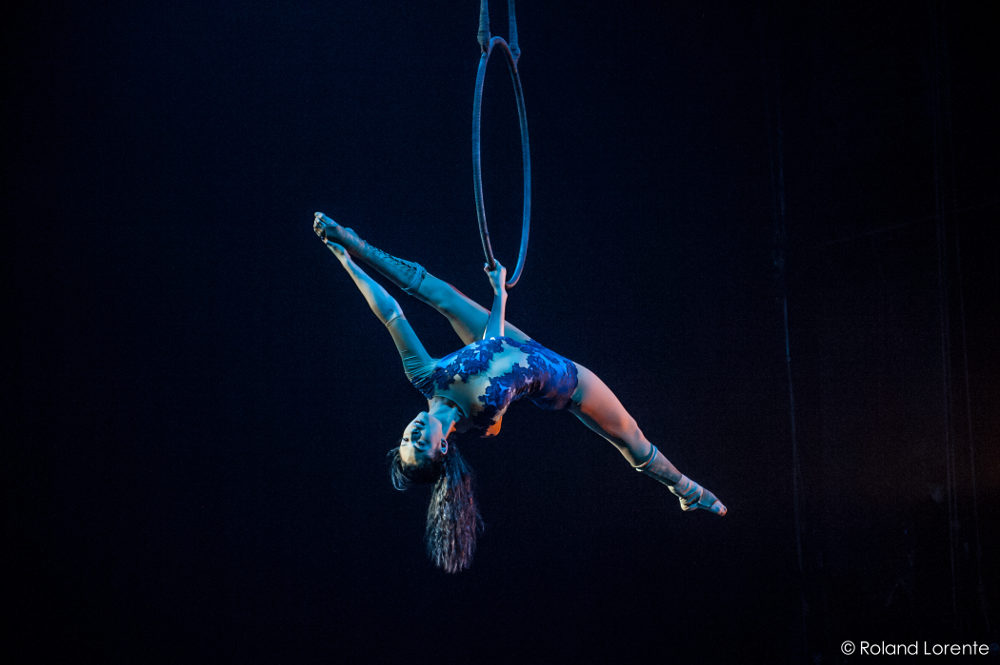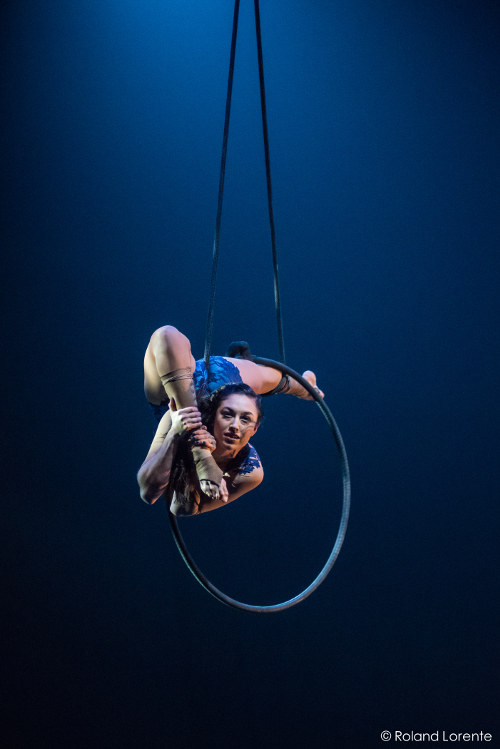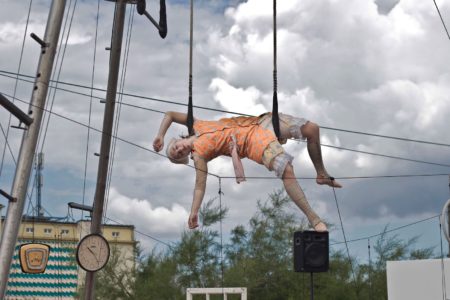1. Thula could you please tell me about your way to circus arts? What is your artistic story?
I was born on the Big Island of Hawaii and grew up on the east side of the island in Puna. I started in an acrobatics class when I was around 5 and started performing with kids and adults yet it was a little “dry” since our teacher was 80 years old. At age 6, we found a local youth circus program called the Hiccup Circus. I was only allowed to join only if my mom participated with me since the starting age was 7. We brought acrobatics into the circus. I also took gymnastic classes. At age 12, I auditioned and secured a spot with a summer youth circus tour on the East Coast called Circus Smirkus and travelled/performed with them for three summers. On the fourth summer, I got a big wake up call by not being accepted. Up until that point, I had been riding on my natural talent yet didn’t take it seriously enough. In 2009, I shifted from being a normal teenager and committed to 6 hours of training/day as well as online schooling so that I could pursue my dream to be a professional circus performer. Within a year and a half of this rigorous routine, I was hired at the age of 16 to perform with The Great American Circus which was a traditional circus that performed internationally.
2. How do you create your choreographies and transitions?
My act that I graduated from The National Circus School in Montreal took about three years of developing sequences and transitions. It was a combination of me exploring and training for hours and hours and then also having guidance from my artistic and technique coaches. Now that I have an act that I am very happy with each detail I can adapt it to different shows and songs. Sometimes I switch around the sequences or specific tricks within a sequence but for the most part I usually have three sequences within a number. I video myself training quite often because you are your worst critic. When I create new transitions I try to make them as fluid as possible and the least amount of use with my hands.

3. Is it easy for you to find the right music? How do you look for music for your performances and what are your favorite bands, singers or composers?
I find that searching for the perfect song is probably the most frustrating and time consuming part of creating a new piece. I spend hours and hours researching different artist/composers/videos ect. It can be difficult to find a song that has all the components that you want it one song. For aerial numbers it is important that the song has enough musical changes and doesn’t become to repetitive. It is also important to really love the song because you hear is so many times! I am always on the look out for new act songs, when I’m out and hear a song that captures me I make sure to take note of it. I also get a lot of inspiration from different soundtracks from movies and shows that I go watch.
4. Could you please share a good warm-up routine for aerialists?
My usual daily warm up on hoop is five skin the cats, then one are meat hooks on each side x3, one arm straddle ups on each arm 3x, meat hook to straddle on each arm 3x, back side plenches 3x each side. Then I like to warm up most of my dynamic elements.
5. What are the best flexibility exercises for chest stand on the hoop?
Chest stand (the way I do it) is one of my signature moves that I developed. I don’t teach this element on hoop. Training contortion on the ground is a great way to increase your flexibility in the air. Holding chest stands and learning how to breathe in the pose can help a lot to increase your flexibility. My secret for warming my back up quickly is stretching with a foam roller. I warm up my bridges and chest stands with it in my back so it takes the pressure off my muscles. I also do chest stands elevated so my chest is higher than my feet. This increases the flexibility in your upper back.
6. You have a very innovative and dynamic style. Could you give some tips for dynamic transitions on the hoop?
It’s important to find your own style and way to move on a hoop. Many artist could do similar skills but it is the transitions into each or way of moving on a hoop that makes it so unique. Once you know how to manipulate a hoop it’s all about exploring your own different possibilities. Sometimes you can get stuck moving in the same way. At the moment its best to either leave it alone for a little while until you can come back with a fresh take or ask for an outside eye. Sometimes it can take months to figure out a “new” transition and other times it happens right away. Watching videos is a great way for inspiration but it is very important to be inspired but not copy! Don’t learn how they do it but make it yours. Experiment with creating transitions that don’t involve your hands or adding a twist or extra roll. Always think of continuing through and not sure getting to the position.
7. In which countries are you performing?
How is it with rigging for performances in different countries? What is important to consider there as an aerialist?
In most contracts that I do the company has a rigger who installs everything for me. I don’t currently own my own pulley system because I haven’t work as a independent contractor in Germany that much yet…But I will most likely purchase my own at some point. I just finished a contract with Cirque Eloize performing in the show ID. We were performing in Cancun, Mexico and in a city a few hours outside of Shanghai, China. My next contract is at the Adelaide Fringe festival in Australia. It’s with a new creation called Filament that I was apart of. We premiered this past summer in Czech Republic and this will be the first long run of the show. We have a rigger with this show as well. It is still very important as an aerialist to double check your own rigging no matter what. I am always aware of what the hardware looks like and if I see anything abnormal I won’t perform until its inspected.
8. Could you share some tips for foot hangs on the hoop and for dropping into a foot hang?
Most aerialist prefer one to the other of foot to heel hang. I have always preferred heel hangs. Of course at the beginning it hurt but after a while you build calluses and the pain goes away. I wear a foam protection on my ankle to protect from the impact of the drop. Learning to hold hangs is all about the correct placement and then just training endurance on it daily! Learning how to transfer from knee hang to heel hang is an important first step to the drop. Starting from knee hang holding your ankles in a back arch and then lowering to heels without letting go of your hands. It takes a good amount of back/shoulder flexibility to be able to do this. Next step is being able to shift your weight to just one leg and releasing the other.
9. How do you travel with the hoop? Do you take your hoop with you, how does it work with packaging, costs, etc.?
I have a custom made hoop bag that a company from Quebec made for me. It is a circular bag with a flat bottom. It is about 10″ wide and fits my hoop plus rigging and other show material I may travel with. It has removed wheels that attach with Velcro. The bag also has backpack straps. When I have it on I look like a ninja turtle! I always travel with my hoop but the company I am with at the time pays for the cost of travel. My hoop is very light and only weighs a few kg but with the other things I throw in my bag it usually ways around 15kg. It is usually checked in as a sports equipment.
10. Where one can book you for a show or visit your classes and workshops?
For show/act bookings as well as privates and workshops I am available via email, website, as well as on my social media!
Facebook
Instagram
Website
Email: thulamoon@live.com
Photos: Warren Zelman Photography


 Aerial Theater by Jana Korb – Kafka. Vintage! Women! Varieté! And More.
Aerial Theater by Jana Korb – Kafka. Vintage! Women! Varieté! And More. Interview with Anne-Sophie: Circus scene in Argentina
Interview with Anne-Sophie: Circus scene in Argentina Talk About Aerial Training With Aurélie Bernard
Talk About Aerial Training With Aurélie Bernard